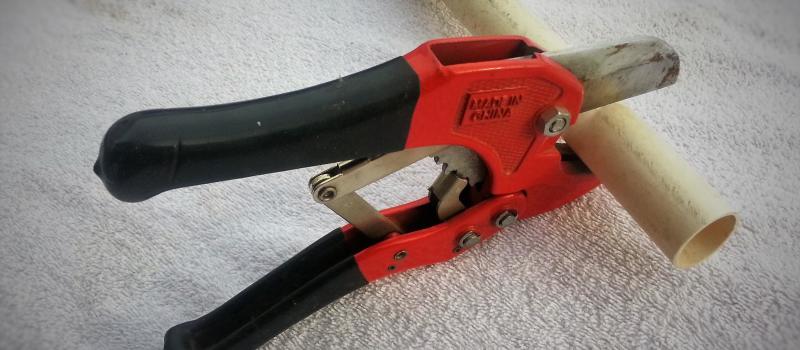How To Cut Deburr Glue PVC Pipe
How to cut deburr glue PVC pipe is not very hard to do. It’s what you use to make the cut and what is leftover after the cut that may impact your project. For this article, I will use the term PVC, but the procedures in this article will work on any plastic material pipe. ABS, CPVC, and PVC are part of this group. So let’s get into it.
What tools to use to make the cut
Practically any saw you have will cut PVC pipe. Any saw designed to cut wood or steel will work. Manual or power saws will also do the trick in getting that pipe cut. But for the cleanest cut, there is nothing like the PVC cutter with ratcheting action.Tools with the ratcheting action allow the user to get and hold pressure on the pipe with the cutting blade with little effort The tool is available in two sizes with the ability to cut up to 2″ PVC pipe for the largest cutter. There are other tubing cutters that are made for 1/2″ and 3/4″ pipe only that will give you nice clean cuts without the ratcheting action.
How To Deburr?
The PVC cutter and tubing cutters give you such a clean cut that no further deburring is required. However, if you use a saw, deburring is required.
How to Use a Deburring Tool
You can use a wide range of tools to deburr. When working with a plastic pipe you can use sandpaper, steel wool, a file, a pocket knife, and if you’re so inclined a tool made just for deburring(see video). The video gives you some great tips for deburring a metal tube but since we are working with a plastic pipe(tube) the same techniques apply.
The end result will be a pipe cut, with no burrs inside the cut edge or on the outside of the cut edge. The pipe is almost ready for applying glue.
Preparing the pipe for glue.
Deburring takes care of the large contaminants that could cause the failure of the joint. But there are still things that could cause failure of the glue weld. Dirt or other substances on the surface of the pipe need to be removed. This is done with Purple Primer on PVC pipe. On ABS pipe use Clear cleaner. Shake or stir the primer and glue cans before use. If the glue has gelled discard it properly.
Anytime you are using these solvents be sure to avoid eye and skin contact. Always wear safety equipment(gloves and glasses with side shields). Make sure to apply the primer or cleaner to the depth of the fitting. Make sure no area of the contact area is missed. Don’t forget to apply primer or cleaner to the inside of the fitting. Ok, the pipe end and the fitting are now ready for applying glue.
Glue the pipe
The glue is applied differently to the pipe. The end result is to have a fresh rather thick coat of glue on the pipe, while the fitting has a thin coat just prior to pushing the two parts together.
So the process is as follows:
1. Apply glue to the pipe.
2. Apply glue to the fitting.
3. Apply another coat to the pipe.
4. Join the parts together quickly with a 1/4 turn making sure the pipe bottoms out in the fitting.
5. Hold them together for at least 30 seconds to prevent the pipe and fitting from pushing apart.
Best Practices PVC Glue Use Video
There you have it all the information you need to keep your project lists growing with your new skills.
Related Article: The Difference Between Schedule 40 PVC And Schedule 80 PVC
Related Article: Reusing PVC Fittings
More information on cutting techniques? (click here)
A primer on PVC primers and Cement (click here)
More information on PVC and CPVC installation (click here)
(Mybusyretiredlife.com All rights reserved)
(Mybusyretiredlife.com All rights reserved)
(Mybusyretiredlife.com All rights reserved)









![By Tomwsulcer (Own work) [CC BY-SA 3.0 (//creativecommons.org/licenses/by-sa/3.0)], via Wikimedia Commons Mybusyretiredlife.com tubing cutter](https://www.mybusyretiredlife.com/wp-content/uploads/2016/01/Mybusyretiredlife.com-tubing-cutter-300x138.jpg)